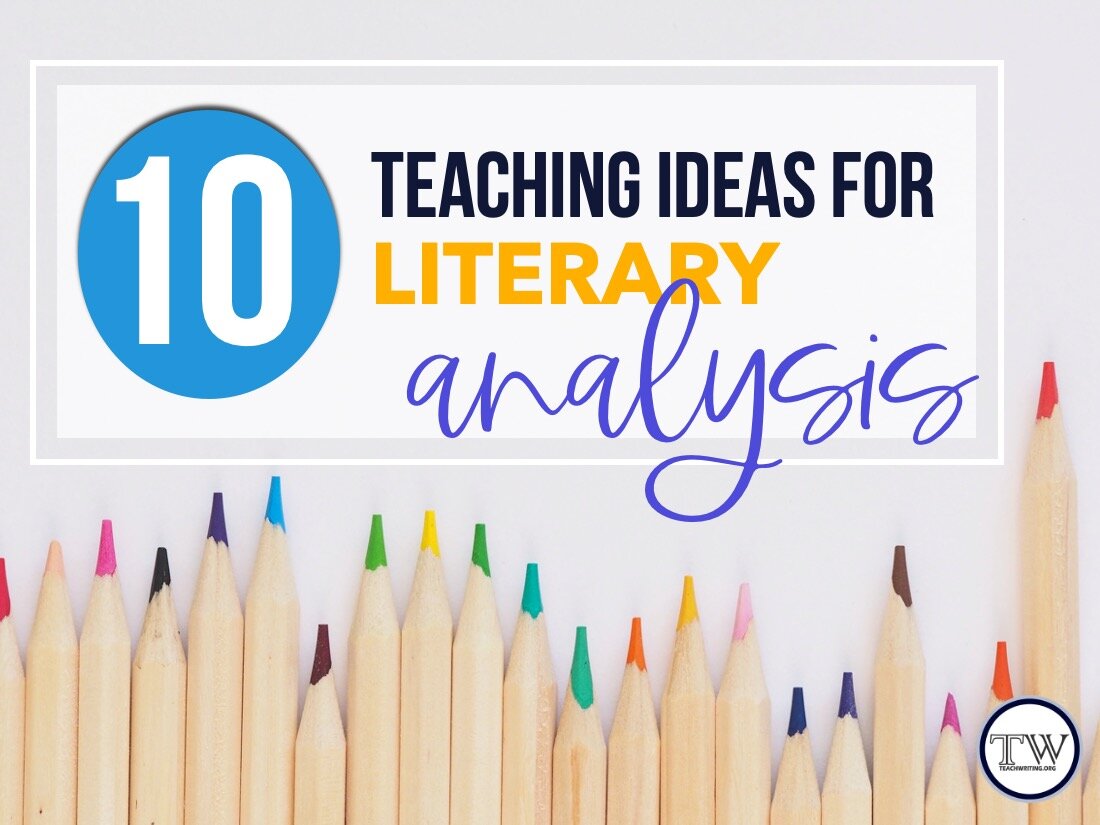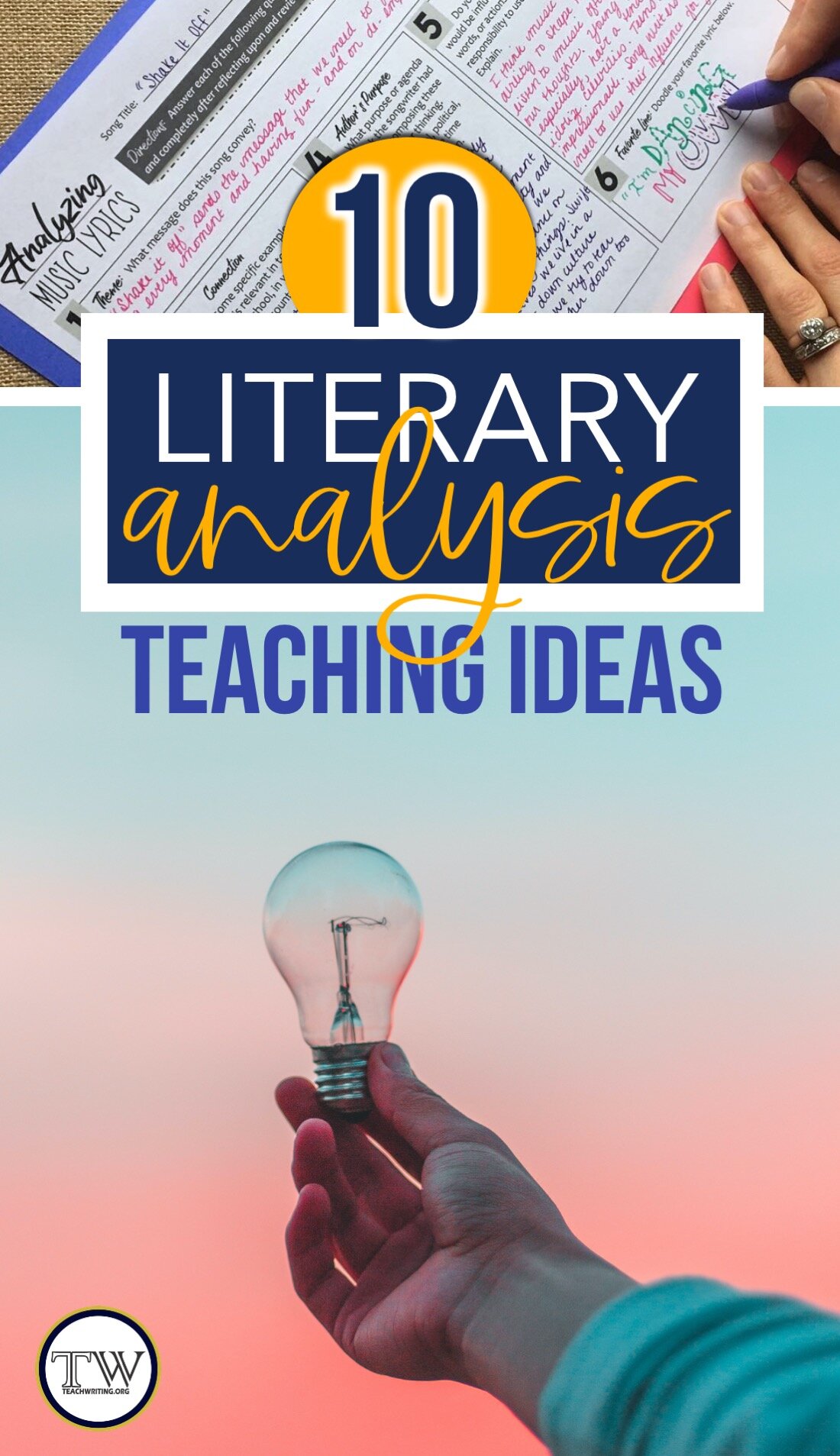10 Tips for Scaffolding Literary Analysis
Literary analysis is the powerhouse of ELA reading and writing standards. But, students aren’t always as excited about it as teachers would like. In order to engage students in relevant literary analysis, I’ve experimented with some different approaches.
When working with struggling readers and writers, one thing that has truly helped is building in a specific literary analysis unit at the beginning of the year. This post is full of ideas for how to make the unit meaningful!
Keep reading for TEN tips that will help with scaffolding literary analysis.
Give a PRE- and post-ASSESSMENT
Students are motivated when they can see their growth. Giving them a pre-assessment that is similar to the post-assessment is one way to provide that perspective. An authentic literary analysis assignment usually involves writing an essay, but you can scale it back for a pre-assessment. Ask students questions about literary analysis - what does it mean for them as readers and writers? Also, have them analyze some images and write a paragraph in response.
build in DIRECT INSTRUCTION
To get everyone on the same page, try beginning with direct instruction. Discuss what analyzing is, the types of texts that can be analyzed, the goal of literary analysis, and the process. Explain that analyzing is something we do when we read but also that literary analysis is a type of writing that is an outlet for the thinking we do as readers.
PRACTICE VIA CHUNKING
On the first day you practice literary analysis as a class, try chunking the lesson. Spend ten to fifteen minutes on three different activities that all build in complexity. For instance, I begin with a short film, move to a political cartoon, and end with a poem.
FOCUS ON THE STANDARDS
The goal of literary analysis is to help students understand how story parts are working together, impacting one another, and shaping the whole work. When selecting texts to use in a literary analysis unit, think about what students could use them to analyze. Symbolism? Theme? Plot? Setting? Character development? Other story elements? Culture?
Use graphic organizers like these for short stories and these for poetry that will help students break down literary analysis strategically.
USE AN ACRONYM
Common Core Writing Standards require that students write arguments to support claims, supported with relevant and sufficient evidence. The problem? Students don’t always remember to include evidence to back up their claim…nor do they always explain the evidence they cite from the text. Using acronyms can help students to remember how to build an extended response. For instance, ICE is simple to remember.
INTRODUCE your claim
CITE textual evidence to support it
EXPLAIN how the text evidence supports your claim
10 fresh ideas for teaching literary analysis in middle school and high school ELA
SPRINKLE IN MULTIPLE GENRES
Literary analysis lessons are engaging when students have opportunities to practice analyzing a variety of different text types. Give them exposure to animated clips, songs, films, fiction, nonfiction, poetry, paired texts, commercials, art, and more.
SELECT RELEVANT TOPICS
When asking students to write literary analysis essays based on what they have read, I like to begin with topics that are relevant to them. It’s true…both for higher education and standardized testing, students need to have the grit to read and analyze challenging texts that, perhaps, they don’t always enjoy. Still, the ability to do that seems to come more easily after students are given opportunities to work within their comfort zone.
Watching a film? What commentary is the movie making about culture? Have students analyze the cultures represented. What is the dominant culture? What are the countercultures? Who is marginalized or not represented, and why?
Reading a book independently? Students can analyze the theme’s or character’s development within their text. Short films are excellent for this topic as well!
Listening to music? Students can write about how the song artists uses rhythm, rhyme, figurative language, and intensity to create a certain mood. (You can download this lesson for free!)
USE EXAMPLES AND MODEL
Students benefit from seeing examples of literary analysis writing, but even more importantly, it helps them when we model our thinking. Take time to model your internal thought process for students before they write each part of their literary analysis essay. Spend time color-coding the claims, textual evidence, and explanations.
Because literary analysis is far from formulaic, frequent feedback is also important. Make time to confer with students as they write, and you’ll notice an increase in effort and motivation.
MAKE IT BITE SIZE
Differentiate the amount of writing you expect students to complete each day based upon their readiness levels. We all have students who stare blankly at us or their screens when we ask them to write more than one paragraph at a time. If students aren’t quite ready to write an entire body paragraph, break it down! Ask them to write one part of the paragraph each day over the course of a week. The goal, ideally, would be that over time, as students gain more confidence, that scaffolding would be peeled back.
DEDICATE A UNIT
Literary analysis is an artery that runs through an ELA course all year, but when we dedicate a unit to scaffolding literary analysis, exploring how it applies to a variety of texts types, and think about how we use it as both readers and writers, we are providing students with a foundation they can draw upon all year long.
And, those are ten of my favorite scaffolding tips for teaching literary analysis. Whether you are working with middle and high school students who are needing a foundation or those who struggle with the abstract nature of reading and writing analytically, hopefully these concrete approaches will help build their confidence and engage them in meaningful learning.
SPOTLIGHT RESOURCE
This analyzing texts unit is a scaffolded approach to introducing students to literary analysis for both fiction and nonfiction texts. Use the engaging text suggestions included, or pair the graphic organizers and activities with your own course materials.
ABOUT THE AUTHOR
Melissa is the creator of Reading and Writing Haven and a collaborative blogger on Teachwriting.org.
A middle and high school English teacher for over a decade now turned instructional coach, Melissa is an avid reader and writer, and she loves sharing ideas and collaborating with fellow educators. Melissa use her degrees in English, Curriculum & Instruction, and Reading as well as her Reading Specialist certification to ponder today’s educational issues while developing resources to help teachers, students, and parents make learning more relevant, meaningful, and engaging.
When she's not teaching, Melissa lives for drinking a good cup of coffee, loving on her family, working out, and contemplating the structure of a sentence as well as how she can lead her students to deeper reading comprehension (Melissa's true nerdy passions).
Visit Melissa on Instagram, Facebook, or Twitter for English teacher camaraderie and practical, engaging teaching ideas.




